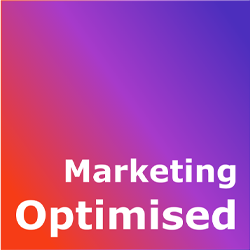What is Google Analytics 4
- Alain Machado
- Sep 20, 2022
- 4 min read

Please note that from July 1, 2023, Google Analytics will no longer be able to process new data. On October 1, 2023, Universal Analytics 360 properties will receive an extra three months of data processing time, ending on October 1st, 2023. After those dates, Google Analytics 4 will be the only Google tool available to monitor your website activity.
In this blog post, we'll cover:
What is GA4?
In short, GA4 is the next generation of Google Analytics. It builds on the success of Universal Analytics, which was released in 2014, and introduces several new features and concepts not seen in Universal Analytics.
Some of the key features of GA4 include:
A focus on events: In GA4, all data is collected as events. This means that there is no need to define pageviews anymore.
Increased flexibility: GA4 offers increased flexibility when it comes to how data is collected and processed. This allows businesses to better tailor their analytics setup to their specific needs.
How is GA4 different from Universal Analytics?
GA4 has a few key differences that make it a more powerful tool for businesses, including:
1. A focus on events rather than pageviews: In Universal Analytics, businesses track pageviews as their primary metric. GA4 instead focuses on events, which provides businesses with more granular data on how users interact with their website or app.
2. Machine learning: GA4 uses machine learning to automatically surface insights and find patterns in your data. This means businesses can get valuable insights without having to invest in hiring data analysts.
3. Cross-platform reporting: GA4 provides businesses with the ability to see how users interact with their website or app across all devices, including smartphones, tablets, and desktop computers. This is a major advantage over Universal Analytics, which only offers limited cross-platform reporting.
The new GA4 reporting window

Welcome to the new Google analytics main dashboard, as seen above which has a new reporting window. The reporting window is where you will find all your insights and data.
The old interface had a lot of small charts and graphs which could make it difficult to find the information you were looking for. The new interface has larger charts and graphs that are easier to read and understand. You can also customize the dashboard to display only the information that you want to see.
There are also new features in the reporting window, such as:
The ability to see data from multiple Google Analytics properties in one place
A timeline graph that shows how your website or app's traffic has changed over time. The ability to add annotations to your data so you can remember why certain changes happened
Google Analytics 4 also has a new set of reports that are not available in Universal Analytics. These new reports include:
1. Engagement reports: These reports show how engaged users are with your website or app. They include metrics such as session duration and pages per session.
2. Lifetime value reports: These reports show the value that users bring to your business over time. They include metrics such as lifetime value and retention rate.
3. Cohort reports: These reports show how groups of users interact with your website or app over time. They can be used to track the performance of marketing campaigns or to understand how different types of users interact with your website or app.
4. Conversion reports: These reports show how users are converting on your website or app. They include metrics such as conversion rate and revenue.
5. Attribution reports: These reports show how different marketing channels contribute to conversions on your website or app. They can be used to understand which channels are most effective at driving conversions.
6. Audience reports: These reports show information about the users who visit your website or app. They include metrics such as age, gender, and location.
7. Discovery reports: These reports show how users are finding your website or app. They include metrics such as organic traffic and referral traffic.
8. Behaviour reports: These reports show how users are interacting with your website or app. They include metrics such as pageviews and unique visitors.
9. Fraud reports: These reports show how much fraud is happening on your website or app. They include metrics such as chargebacks and fraudulent transactions.
10. The ability to create custom reports: This is a powerful feature that allows you to create reports that are tailored to your specific needs.
The benefits of GA4 for businesses
There are several benefits of GA4 for businesses, including:
1. Better data: The focus on events and the use of machine learning means businesses will get more accurate and granular data with GA4. This data can be used to make better decisions about marketing, product development, and other areas of the business.
2. Improved insights: The machine learning features of GA4 make it easier for businesses to surface valuable insights from their data. This can save businesses a significant amount of time and money that would otherwise be spent on hiring data analysts.
3. Greater cross-platform visibility: The ability to see how users interact with your website or app across all devices provides businesses with a greater understanding of their customers. This information can be used to improve the user experience and drive more conversions.
Why you should switch to GA4
The existing Universal analytics will soon be phased out, so businesses need to switch to GA4 in order to continue using Google Analytics. The benefits of GA4 make it a more powerful tool for businesses, so it is worth making the switch.
If you're not sure how to switch from Universal Analytics to GA4, don't worry – our team at Marketing Optimised can help. We specialize in helping businesses make the transition to GA4 and can provide all the support you need to get started.
Contact us today to learn more about our services.





